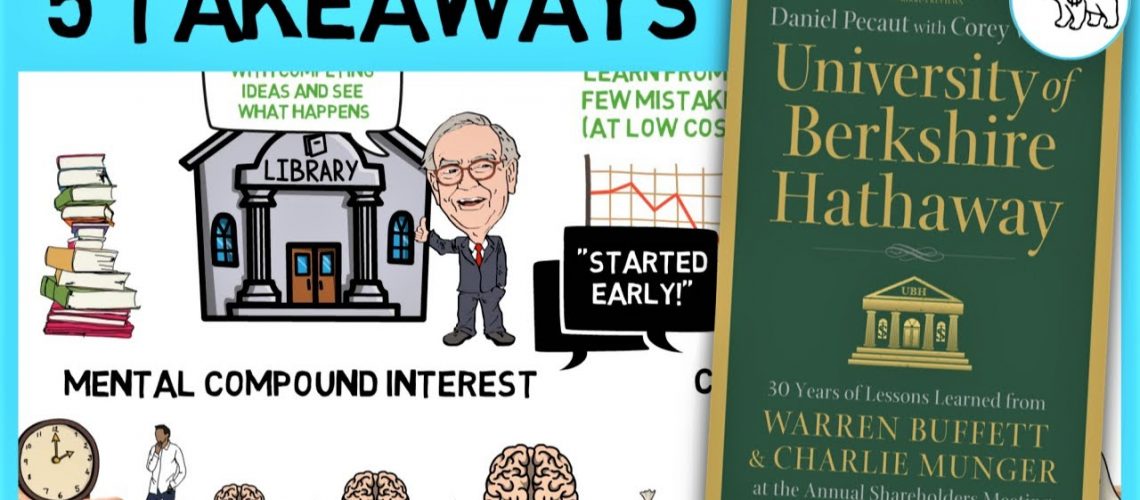In this video you'll learn key takeaways on how to master the investment strategy of Warren Buffett and Charlie Munger.
Key Takeaways
A return of 12,717%, such as the S&P 500 achieved isn’t too bad. For the price of a 19-inch Zenith TV in 1965, you would be able to buy a brand new (and Swedish) Volvo V60 in 2019.
However, if you invested in Berkshire Hathaway, you could have bought that Volvo at the price of a Barbie doll instead.
Let’s see what they have to say about Buffett and Munger’s investing approach.
Buffett and Munger's Investing Approach
1. How to invest during times of inflation
The aspiring investor must learn how to beat this inflationary enemy.
And this may be extra important to study today, when pretty much every major Western economy have record low interest rates. At least in theory, this should lead to higher inflation.
Let’s start out with what you shouldn’t invest in:
Currencies Well, this one pretty much explains itself. As long as governments around the world keep printing money, the value of currencies will decrease.
Bonds There are some special cases, but with a regular bond, the idea is that you pay a fixed sum now, and in return, you get a fixed future stream of cash flows.
The value of this cash flow is proportional to inflation, which is the reason why investors demand higher bond yields in an inflationary environment.
Gold This may upset some, but according to Warren Buffett and Charlie Munger, gold isn’t a good investment in an inflationary environment either. Actually, it’s not a good investment at all!
The problem is that these investments don’t produce anything. One kilo of gold will remain one kilo of gold even ten years from now.
Therefore, over time, returns from such investments will be mediocre.
Someone calculated that, even that record-breaking piece had only had a return of 13% per year since it was created, which Buffett and Munger, with their 20% return, beat by a fair margin.
To cope with inflation, you should invest in assets that produce something.
Many industrial companies with a lot of tangible assets on their balance sheets fall into this category.
The very best way to secure your personal finances against inflation is to invest in yourself though. If you increase your earning power, you will be sure to stay ahead of inflation. More on this in the final takeaway.
2. What is investment risk?
In academia, investment risk is defined as the volatility of an investment.
If there are huge swings it must per definition be riskier to invest in, right? WRONG!
Warren Buffett finds this measurement of risk to be silly. How can an investment that alternates between a 20% return and 80% return per year be riskier than a steady 5%?
With Buffett’s buy-and-hold strategy of stocks, market swings are therefore irrelevant. Instead, he looks at three different types of business risks:
1. Capital structure
The higher the leverage, the riskier the business.
Excess leverage can sometimes cause people to make really dumb decisions, even if they’ve been very successful before.
This goes for individual investors as well, be very careful with leverage.
"Anything times zero is zero"
2. Capital requirements
3. Commodities
3. Invest using filters
"Few humans have an edge if they follow 40 companies or more"
So regarding key ratios, such as price to earnings or return on assets, they have nothing generic to share.
However, they have two other types of filters that every investment they make must pass:
1. Great management If the company doesn’t have great executives, who also act in the best interest of shareholders, Buffett and Munger will avoid it.
For more on this investing 101 tip, check out the summary of The Essays of Warren Buffett.
2. Circle of competence If you don’t have a good idea of how the business will perform in the next, say, 5-10 years, you should simply avoid it.
- For example Berkshire has long stayed away from technology and pharma stocks.
- Back in 1999, Buffett actually questioned if anyone could understand technology companies during the peak of the dot-com bubble. He jokingly said that: If he was a business teacher, he would, for the final exam, present an Internet company and ask the students how much it is worth. And anybody who gave him an answer, he would flunk.
4. The share of mind principle
- Soft drinks
- Shaving blades
- Smartphones
- Ketchup
- Kids movies
Were these the companies that you came to think about?
This is the share of mind principle.
The advantage of these companies, as Buffett explains it, lies in the pricing power that such associations lead to.
- For example: If you are thirsty and perhaps also a little bit tired and you need something refreshing, the go-to for many is a Coke.
- On the other hand, if you need to free some time while the kids are at home, you put on a Disney movie.
You don’t go for other products, because you’re not certain that they will solve your problems. Therefore, it doesn’t really matter if Coke or Disney costs 20% more than their competitors. The brand’s have great pricing power.
"If share of mind exists, the market will follow"
5. Invest in yourself
In George Clason’s “The Richest Man in Babylon”, it is suggested that you should always pay yourself first. Always, give yourself 10% of what you earn first. The world can have the rest.
Charlie Munger read this book at an early age and learned about the power of compound interest.
Money, that earns money, that earns money that earns money.
- For example, if you are the best surgeon in town, your wage will likely be more than indexed to inflation.
- Warren Buffett spent tons of hours in his early days reading every single book he could fetch about investing from the local library Some of them even twice!
- He suggests that you should fill your mind about competing ideas and then see what makes sense to you. If only there was a place where you could do that without having to spend tons of hours, and, without having to travel to the local library every day
- The earlier you can start, the better.
Not only does money compound but as Buffett and Munger suggest – learning does as well.
Making your first investing mistakes while your account is still small, and to start building up a database of great stocks in your mind, is what they would advise every aspiring investor to do.
All right time to sum up:
- The risk associated with an investment is not dependent on the price fluctuations of its stock, but on the underlying characteristics of the business
- Use filters to avoid wasting time on unproductive investment ideas
- A great branded product is often a good investment. If share of mind exists, the market will follow
- Invest in yourself. Use compounding, not only for your bank account, but also for your mind

